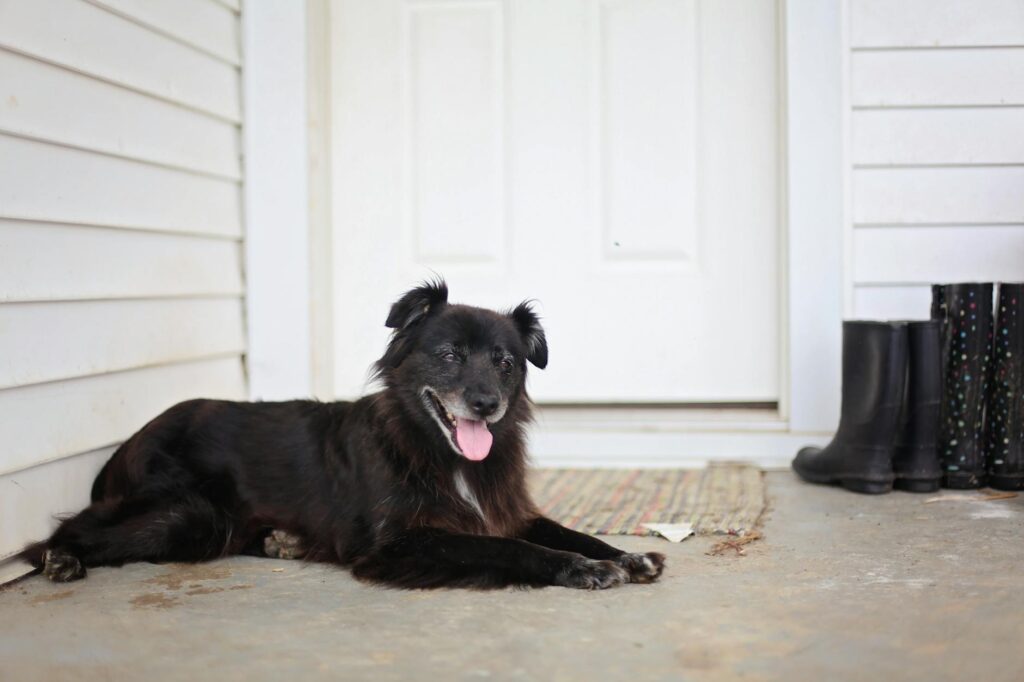Introduction
Have you noticed your dog acting differently lately? Maybe they’re more anxious, less playful, or suddenly aggressive? Dogs, like humans, experience behavioral changes throughout their lives, and these shifts can be caused by a variety of factors—including health issues, aging, environmental changes, or emotional stress.

Ignoring these changes can lead to long-term behavioral problems, but the good news is you can take action! In this article, we’ll explore:
✅ Why your dog’s behavior might be changing
✅ What these changes could mean
✅ How to address the root cause and improve your dog’s well-being
By understanding what’s happening, you’ll be better equipped to help your furry friend feel safe, happy, and balanced.
Why Is Your Dog’s Behavior Changing?
Your dog’s behavior isn’t random—it’s a response to something happening internally or externally. Here are the most common reasons:
1. Health-Related Issues
Pain or Illness – If your dog is suddenly irritable or withdrawn, it could be due to an underlying health problem such as arthritis, dental pain, or digestive issues.
Cognitive Decline (in Older Dogs) – Senior dogs may develop canine cognitive dysfunction (dog dementia), leading to confusion, anxiety, or disrupted sleep.
Sensory Changes – Hearing or vision loss can make a dog more cautious or anxious in new situations.
Solution: If you notice sudden or severe behavior changes, schedule a vet check-up to rule out medical causes.
2. Emotional Stress or Anxiety
Changes in Routine – Dogs thrive on consistency. Moving homes, a new family member, or even a shift in your work schedule can cause stress-related behaviors like whining, hiding, or destructive chewing.
Separation Anxiety – If your dog becomes clingy, restless, or destructive when left alone, they might be struggling with separation anxiety.
Loud Noises or Trauma – Fireworks, thunderstorms, or past traumatic experiences can lead to fear-based behavioral shifts.
Solution: Provide comfort, stability, and positive reinforcement. If your dog is anxious, try calming music, anxiety wraps, or desensitization training.
3. Age-Related Behavioral Changes
Puppy Adolescence (6–18 Months) – Just like human teenagers, dogs go through rebellious phases, testing boundaries and sometimes forgetting previous training.
Adulthood (2–7 Years) – Adult dogs may become more territorial or protective, especially if they feel a need to establish dominance.
Senior Stage (7+ Years) – Older dogs may experience lower energy, increased irritability, or signs of cognitive decline.
Solution: Adjust their diet, exercise, and mental stimulation based on their life stage. For aging dogs, gentle exercise and brain games can help keep them engaged.
4. Lack of Proper Training or Socialization
Not Enough Mental Stimulation – Dogs need regular challenges and enrichment to prevent boredom-based misbehavior.
Poor Socialization – If your dog wasn’t exposed to different people, pets, and environments as a puppy, they may develop fear-based aggression or anxiety.
Inconsistent Training – If rules aren’t clear, dogs get confused and may act out.
Solution: Implement consistent training, socialization exercises, and daily mental stimulation activities like puzzle toys or scent games.
Step-by-Step: How to Fix Behavioral Changes in Your Dog
If your dog’s behavior is shifting, follow this plan to identify and address the root cause:
Step 1: Observe and Track Changes
✔ Keep a behavior journal – Note when the behavior started, what triggers it, and how often it happens.
✔ Look for patterns – Does it happen at certain times of the day? Around specific people or animals?
Step 2: Rule Out Medical Issues
✔ Visit your veterinarian to ensure there’s no underlying pain, illness, or cognitive decline affecting their behavior.
✔ Monitor for physical symptoms like limping, loss of appetite, or excessive scratching.
Step 3: Adjust Their Environment
✔ Create a safe, consistent space – Dogs thrive on predictability, so stick to a regular feeding, walking, and play schedule.
✔ Reduce stressors – If loud noises cause anxiety, try white noise machines or calming pheromone diffusers.
Step 4: Reinforce Positive Behavior
✔ Use reward-based training – Praise and treat your dog when they behave appropriately.
✔ Avoid punishment-based training, as it can increase anxiety and confusion.
Step 5: Increase Mental & Physical Stimulation
✔ Engage their brain – Try food puzzles, scent work, and new training exercises.
✔ Daily exercise – Ensure your dog gets enough walks, playtime, and free-roaming time.
Step 6: Consider Professional Help
✔ If behavior worsens, consult a professional dog trainer or behaviorist.
✔ Severe cases (like aggression or extreme anxiety) may require behavior modification plans.
Common Mistakes Dog Owners Make
✔Ignoring Subtle Signs – Small behavior shifts can indicate larger issues. Catch them early to prevent long-term problems.
✔Being Inconsistent – Dogs need clear, consistent rules. If one day they’re allowed on the couch and the next they’re not, they’ll be confused.
✔Skipping Socialization – Even older dogs benefit from exposure to new places, people, and pets.
✔Lack of Patience – Behavior change takes time. Stay patient and reward progress.
Conclusion: Help Your Dog Feel Their Best!
Your dog’s behavior is always communicating something—it’s up to you to listen! Whether it’s a medical issue, anxiety, or simply growing older, understanding the root cause can help you create a happier, more balanced life for your furry friend.
Take action today! Start by observing your dog’s behavior, making small changes, and seeking professional help if needed.
💬 Has your dog’s behavior changed recently? Share your experiences in the comments below and help other pet parents navigate similar challenges!
